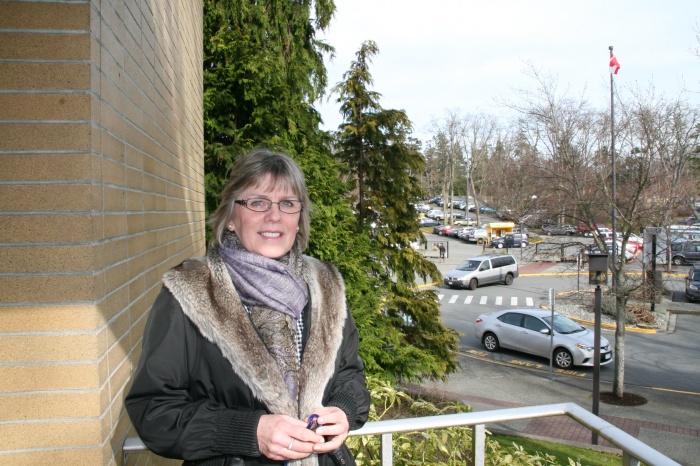If you’re looking to get emotions flying in Victoria, I suggest you say this one word: amalgamation.
Amalgamating would mean that the 13 municipalities that make up Greater Victoria would merge to form one, two, or three units. It’s far from a new idea: municipal amalgamation has been a topic of discussion in this city since the early 1900s. The conversation is so old that most Greater Victoria residents were convinced it was never going to happen. But recently, something changed that mindset.

Check the letters to the editor in any local news source and you’ll see: Greater Victoria residents are using the A-word again. What changed is the creation of the Capital Region Municipal Amalgamation Society, commonly known as Amalgamation Yes. Amalgamation Yes is a group of Greater Victoria residents and policymakers who lobbied Victoria City Council to have the following question placed on the municipal ballot in November: “Are you in favour of reducing the number of municipalities in the Capital Regional District through amalgamation?”
A “no” vote on that question means putting the amalgamation issue to bed… for now. A “yes” vote, though, would mean requesting the province of British Columbia do a study in Greater Victoria to determine the feasibility of amalgamation and the best possible options for municipal restructuring.
It sounds like a lot of work. On the other hand, so does administrating 360,000 people with 91 mayors and councillors. Assuming your taps flow, your garbage disappears on garbage day, and you have access to well-kept parks, you might be thinking, “Who cares?”
The answer might surprise you. We decided to catch up with a few voices on both sides of the argument to try to get to the bottom of what amalgamation in Greater Victoria really means.
Amalgamation always
Some Victorians have made it their life’s work to see that we lose some of our municipalities and follow suit with Canadian cities like Calgary, Halifax, and Toronto, all of which have amalgamation in their past. Amalgamation supporters come from all walks of life. In Amalgamation Yes, there are retired police officers, teachers, sales representatives, and even a former deputy minister. It’s no surprise why Amalgamation Yes spokesman John Vickers calls his own contingent of pro-amalgamators a “cross-section of the community.”
Vickers himself is no exception. Originally from the Maritimes, Vickers moved to Victoria with his home alarm business. Now retired from the security business, Vickers dedicates his time and efforts to the community. His might not be a name you recognize, but if you’ve been around Victoria in the last few summers you have likely seen the fruits of his efforts. Vickers coordinates both the Chalk Art Festival and the Buskers’ Festival, created recently but now staples of Victorian summers. When he finds time away from organizing community events, Vickers is a leading voice for Amalgamation Yes.
For Vickers, Amalgamation Yes’ mission is democracy. “We don’t even have a position on 13 or three [municipalities],” he says. “We just want a community dialogue.”
Not surprisingly, Vickers and his crew are very pro-amalgamation, but that isn’t their immediate mission, he says. Vickers and Amalgamation Yes are counting on support for amalgamation to be high enough to warrant a study on its feasibility. “CFAX has done about eight [surveys]. They’ve all been about 70 or 72 percent in favour of amalgamation. We thought, ‘Let’s get a non-binding question on the municipal ballot.’”
Referendum or no, there is much more to amalgamation than a simple joining of municipalities. Vickers claims that amalgamation is primarily about efficiency.
“At the end of the day, when you lay out police, fire, municipal planning, transportation… there is a strong opinion out there that we a very over-governed region,” he says.

While certainly not everyone in Victoria believes that, enough do to produce 70 percent in those aforementioned polls. In the City of Victoria, Marianne Alto represents those voices.
Alto, a City of Victoria councillor, deals every day with issues at the municipal level. She says, at least in the “core municipalities” of Victoria, Saanich, Oak Bay, and Esquimalt, amalgamation just makes sense. “Where I think there is potential for benefit is in planning and service delivery,” she says.
On the planning note, she points to the Shelbourne corridor by Hillside Mall and the Lansdowne campus. “In the Victoria section, south of North Dairy, it’s zoned for a higher density use. When it becomes Saanich, it’s different zoning. In the core municipalities, you can see many examples where we would have better planning.”
Pro-amalgamators say that an amalgamated community would make it much easier to approve developments, since there would be only one, two, or three zoning regulations to follow, as opposed to the current 13. Alto also says that an amalgamated community would be better at delivery emergency services.
“When you start talking about fire, police, ambulance, it just makes sense,” she says, referencing recent tragedies where local residents were “bounced from one municipality to another just to get through to 911.” The absorption of some municipalities into others would mean that police forces could patrol greater areas and not rely on neighbouring departments.
Alto thinks it’s important to dispel a few myths surrounding the amalgamation question. First off, amalgamation does not necessarily mean all 13 municipalities coming together.
“I don’t think that makes sense, and I don’t think many people think that makes sense. You’re still going to have multiple municipalities, just bigger,” she says.
Alto was largely responsible for the non-binding amalgamation referendum being placed on November’s municipal ballot. Even though she favours amalgamation, Alto says that is not the point. Rather than trying to push an agenda, Alto says that the referendum question will determine how much time and money is spent on pursuing amalgamation. “I don’t care what the answer is,” she says. “For me it is a matter of informing future priorities.”
Alto stresses that the Victoria municipality is not pursuing any action toward amalgamation before the question is posed in November. There’s just no harm in adding the question to the ballot, she says. “I just think it’s really important to ask the question. If it changes or not, it’s going to affect you. You should have a voice at that table.”
Amalgamation No
One of amalgamation’s opponents is Camosun political science instructor Mona Brash. To Brash, it doesn’t matter how loudly pro-amalgamators shout “inefficiency.” It might be the case that we could be running our region more efficiently, but she feels Amalgamation Yes is going about things the wrong way.
Brash points to the BC legislation that says the provincial government can no longer force municipalities to amalgamate. Under the legislation, “municipalities who are interested in amalgamating… are the ones who are to initiate it.” Brash rejects what she calls Amalgamation Yes’ “top-down” approach to amalgamation, since their question would prompt a provincial study and, potentially, a provincially mandated amalgamation.

Also, the question posed by Amalgamation Yes is problematic, Brash says. “It doesn’t say anything. Which municipalities? North Saanich and Central Saanich? Victoria and Oak Bay? There are quite a large number of combinations.”
Brash also rejects the supposed outcome. She believes a “yes” vote on the referendum question will not prompt a provincial study, as Amalgamation Yes hopes. The possible combinations are too many, and not properly laid out in the referendum. “Do you really think the provincial government is going to spend money [on a study]? Not when the process already exists,” she says.
Beyond what she sees as an imperfect question, Brash does not necessarily oppose the principle of amalgamation in Greater Victoria. Rather, she invites citizens of different municipalities to initiate it by lobbying their council, as called for by provincial law. However, Brash does claim that “nobody has successfully argued for any groups of municipalities to amalgamate. The proof is in the pudding: the citizens are not calling for amalgamation.”
Additionally, Brash says that in amalgamation debates and literature in Victoria, “people are not debating the same issue. They’re debating apples and turnips.” Staunch anti-amalgamators argue they will lose access to politicians and control over municipalities, among other things. Pro-amalgamators, like Amalgamation Yes, argue that amalgamation is better for efficiency and better for business. “They’re talking about totally different things,” Brash says. “More people live in municipalities than do business. The biggest investment anyone has is their home. You have much more control at the local level.”
Ultimately, Brash says, the notion that an amalgamated region would be an efficient region does not hold water. “Look at the literature. The efficiency argument can easily be refuted. How do you measure democracy, access to politicians, and control over where you live?”
No stranger to democracy and politicians is Jim McDavid, professor and graduate advisor in the school of public administration at the University of Victoria. McDavid has extensive experience in local government in British Columbia. He does not oppose the principle of amalgamation, but he is not convinced that it is right for Victoria.
The proposed models in Victoria, McDavid says, are based on what he calls “the aesthetics of administrative simplicity.” Simply reducing the number of municipalities, councillors, and mayors might look good on paper, but ultimately misses the point of local government, he says. “A local government is to represent the views of the people within a geographic area,” says McDavid, adding that gutting the number of voices at that table doesn’t always work in anyone’s favour.
The municipalities in Greater Victoria have enough trouble cooperating as it is. Amalgamating them might end up with more disagreements. According to McDavid, “When you put two cities together that are different from each other, you’re going to have winners and losers.” The only likely way an amalgamation is going to end well is if two or more municipalities initiate the process, says McDavid. Even then, the onus is on the citizens to be well informed.
“If the people within any two or three or four communities were to agree that the benefits to amalgamating would outweigh the costs, they should be free to do so. That’s the way the [BC law] currently reads,” he says.
Therefore, municipalities don’t need Amalgamation Yes or a question on the ballot, says Brash. Want to amalgamate? “Go ahead,” she says. “The process is right there.”
Still, McDavid says there is no harm in placing the referendum on the ballot. “If [Amalgamation Yes] is successful in getting a straw vote on the ballot, fine. That’s going to be a good indicator of interest.”
However, there is almost no way that the vote will initiate any kind of provincial action, he says. “If the goal is to get the province involved,” says McDavid, “that’s not going to happen.”
McDavid warns any students and voters not to fall into the trap of aesthetic simplicity.
“Do not make assumptions that the more mayors and councillors you have, the more difficult it is to govern in a metropolitan area,” he says.
McDavid invites students to participate in the process of local government and become informed on amalgamation, but remains unoptimistic that Amalgamation Yes’ initiative will affect much change.
Where do we go from here?
As you can see, there is no shortage of opinion on the amalgamation question here in Greater Victoria. The issue is certainly far from black and white.
And, whether you love it or hate it, you just might have an opportunity to have your voice heard.
If you live in the City of Victoria or Colwood, the referendum on amalgamation will appear on your ballot on November 15. These are the only two municipalities whose councils have approved having the question on the ballot as of press time. Other councils may approve the same question, a version better suited to their municipality, or no question at all.
With or without a referendum, amalgamation has been around way longer than any of us. Come November, we’ll see if it sticks around much longer.

Let’s see… Approx. 25% of the citizens of greater Victoria bothered to vote in the 2011 elections. If this time around 75% of that 25% say ‘Yes’ to a combination of at least 7 different questions – which are not being offered to some voters at all – that means that this non binding referendum might gauge the opinions of approx. 10% of the electorate of the GVA.
Since there is likely very little political upside for the Province to even tread anywhere near amalgamation, Amalgamtion Yes must be dreaming if they think a very statiscally indefensible ‘Yes’ result will stimulate any government process.
For those who are amalgamation proponents I suggest – as others do – that you initiate the process yourself by developing ‘blueprints’ of credible scenarios, backed with realistic cost structures and processes that skeptics like myself can wrap our heads around and make an informed decision on amalgamation – Yes or No…
Re: “Brash does not necessarily oppose the principle of amalgamation in Greater Victoria. Rather, she invites citizens of different municipalities to initiate it by lobbying their council, as called for by provincial law.”
Ms. Brash misses the point that Amalgamation Yes is providing a mechanism for residents to do that.
Re: ““Look at the literature. The efficiency argument can easily be refuted. How do you measure democracy, access to politicians, and control over where you live?”
If the efficiency argument is easily refuted, then we are waiting for Ms. Brash to refute it.
Re: “The proposed models in Victoria, McDavid says, are based on what he calls “the aesthetics of administrative simplicity.” Simply reducing the number of municipalities, councillors, and mayors might look good on paper, but ultimately misses the point of local government, he says. “A local government is to represent the views of the people within a geographic area,” says McDavid, adding that gutting the number of voices at that table doesn’t always work in anyone’s favour.”
Using this logic, we should proceed to chop up Saanich & Victoria and add 10 more mayors and 60-odd more councillors, thereby increasing the number of voices so that even more views are available. That would surely improve things.
Re: “Still, McDavid says there is no harm in placing the referendum on the ballot. “If [Amalgamation Yes] is successful in getting a straw vote on the ballot, fine. That’s going to be a good indicator of interest.”
Exactly.
Could we get rid of CRD at the same time?